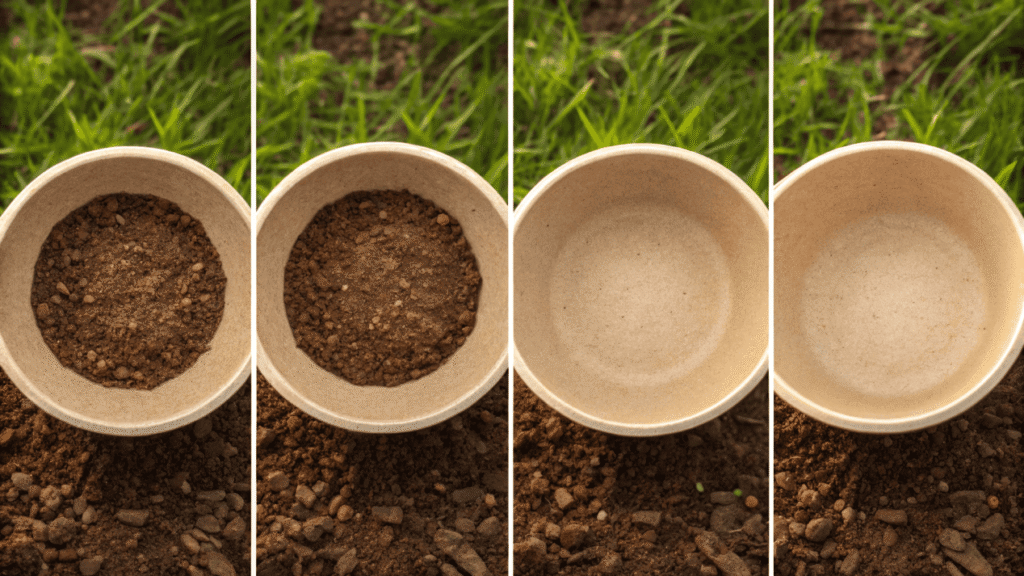You want sustainable packaging, but the terms are confusing. Choosing a "biodegradable" bowl that isn't truly eco-friendly can damage your brand's credibility with savvy customers.
The key difference is certification. "Compostable" means a product breaks down into natural elements in 90-180 days in a commercial facility. "Biodegradable" has no certified timeframe and is often a misleading marketing term.
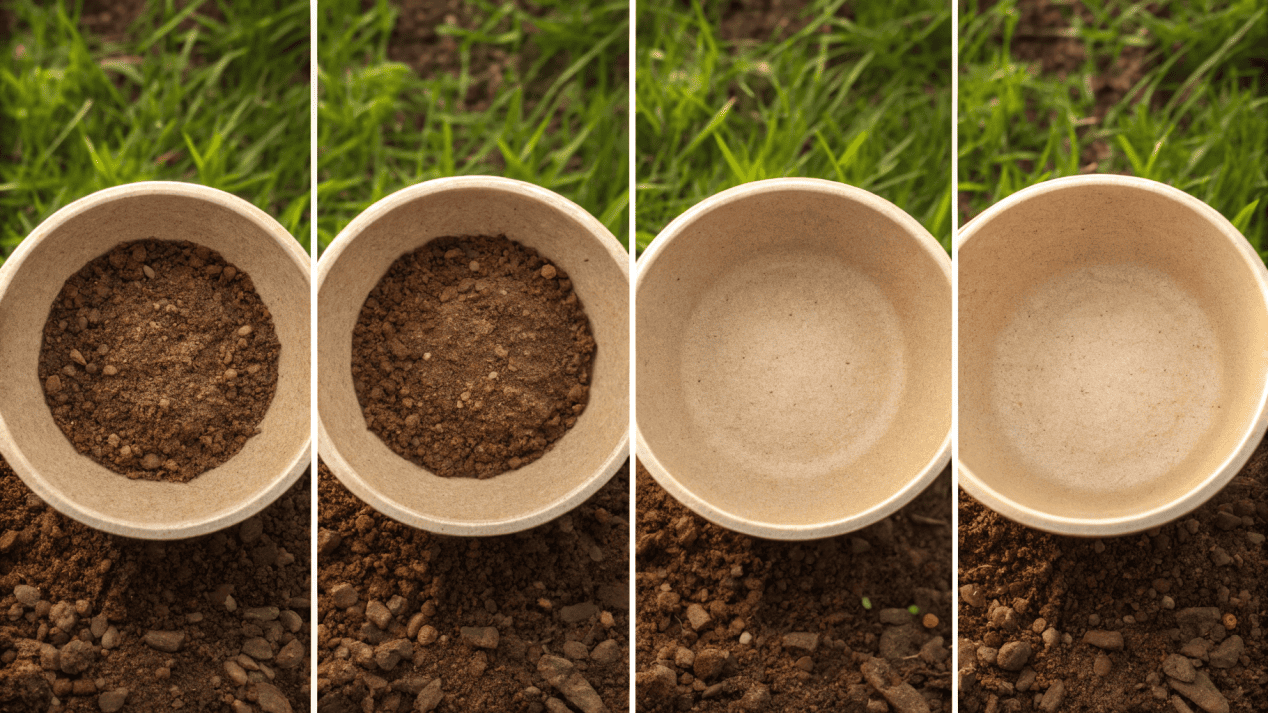
I've had so many clients come to me confused about this, and it's a huge issue. One told me he bought "biodegradable" bowls from another supplier, only to find out they could take decades to disappear and left behind microplastics. It was a disaster for his eco-conscious brand. This is why knowing the real science behind the terms is critical. Genuine sustainability is built on facts, not just feelings. Let's dig into what really makes a bowl green.
What Are the Best Plant-Based Materials for Compostable Bowls?
You need a bowl that is strong for your food but also genuinely good for the planet. Choosing the wrong material can lead to poor performance or greenwashing claims.
The leading compostable materials are Bagasse (sugarcane fiber), Bamboo fiber, and FSC-Certified Paper with a PLA lining. Each offers unique benefits in rigidity, renewability, and branding capabilities.
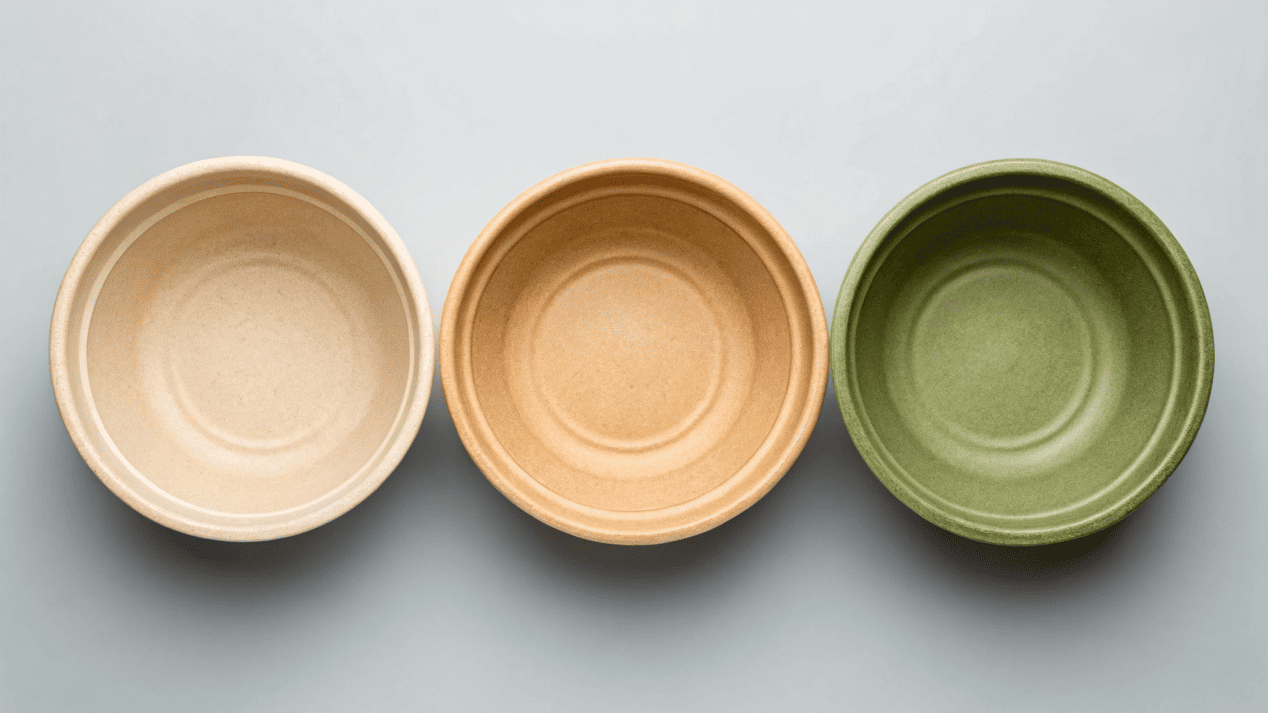
Choosing the right material is the first step. The eco-friendliness of a bowl starts with what it's made from. I work with three main materials that are leaders in sustainability and performance. The first is Bagasse. This is the fiber left over after juice is squeezed from sugarcane. It's an agricultural byproduct, which means we're giving a second life to something that would have been thrown away. It’s super rigid, great for hot and cold foods, and has a natural, premium feel. Next is Bamboo fiber. Bamboo is one of the fastest-growing plants on Earth, making it incredibly renewable. The bowls are strong with a smooth finish. Finally, we have the next generation of paper bowls: FSC-Certified Paper with a PLA Lining. This combines paper from sustainable forests with a waterproof liner made from corn starch, not petroleum. It offers the best of both worlds: a perfect printing surface and 100% plant-based compostability.
How Long Does It Really Take for a Bowl to Be 'Compostable'?
You're told a bowl is "eco-friendly," but what does that guarantee? The term "biodegradable" can mean hundreds of years, which misleads customers who trust your brand's green claims.
A certified compostable product must completely break down into natural elements within 90 to 180 days in a commercial composting facility. The term "biodegradable" has no such official timeframe or standard.
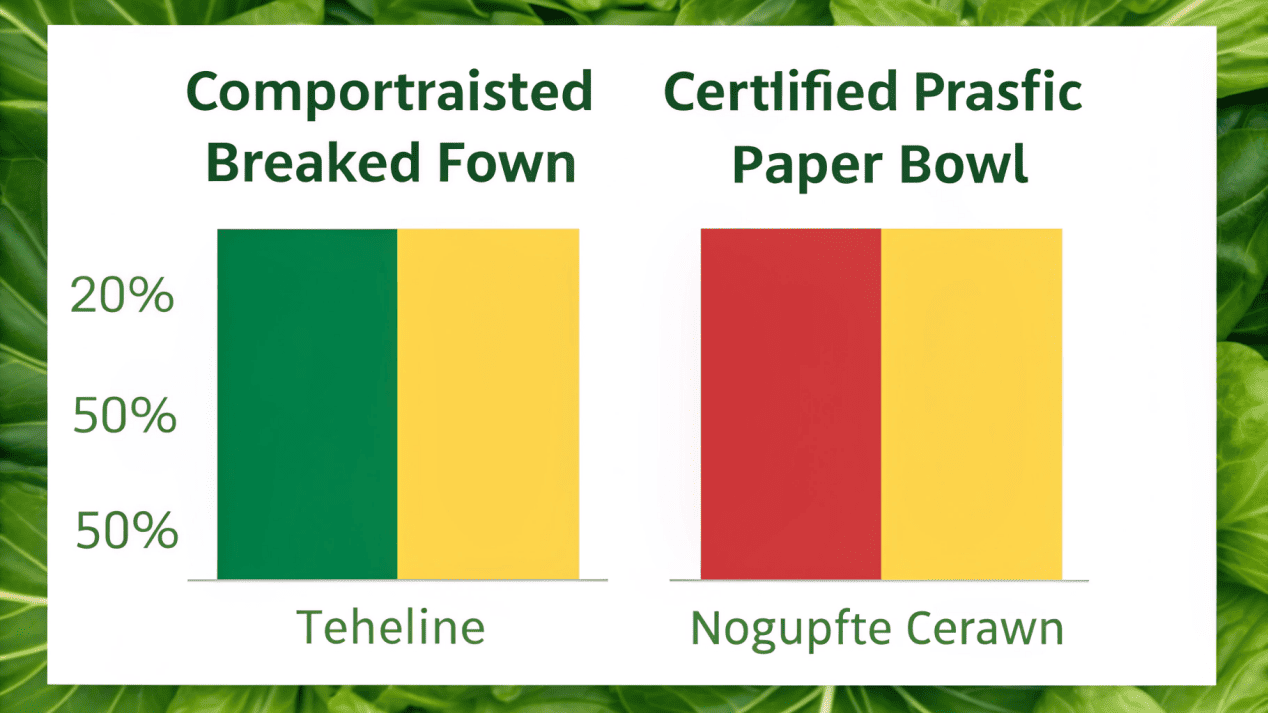
This is where you absolutely must be precise. I tell my clients to forget the word "biodegradable." Technically, almost everything is biodegradable with enough time. A plastic bottle will biodegrade over 500 years. The term has no legal or scientific standard for time, making it an unreliable claim. The gold standard is "compostable." For one of our bowls to earn a certification from an organization like BPI or TÜV Austria, it has to pass a strict scientific test. It must fully break down into natural elements—biomass, water, and CO2—within 90 to 180 days. This has to happen in a high-temperature commercial composting facility. This process leaves behind no toxic residues, only nutrient-rich soil. It is crucial to understand that this timeframe applies to these controlled industrial environments. While our bowls will break down in a home compost bin, it will take much longer because the conditions are not as hot or consistent.
How Can You Brand Your Eco-Friendly Bowls Effectively?
You've chosen a beautiful compostable bowl, but you don't know how to put your logo on it. This missed opportunity means your premium packaging doesn't stand out from the competition.
For full-color branding, use PLA-lined paper bowls, which have a perfect printing surface. For textured materials like bagasse and bamboo, use embossing or debossing for an elegant, tactile effect.
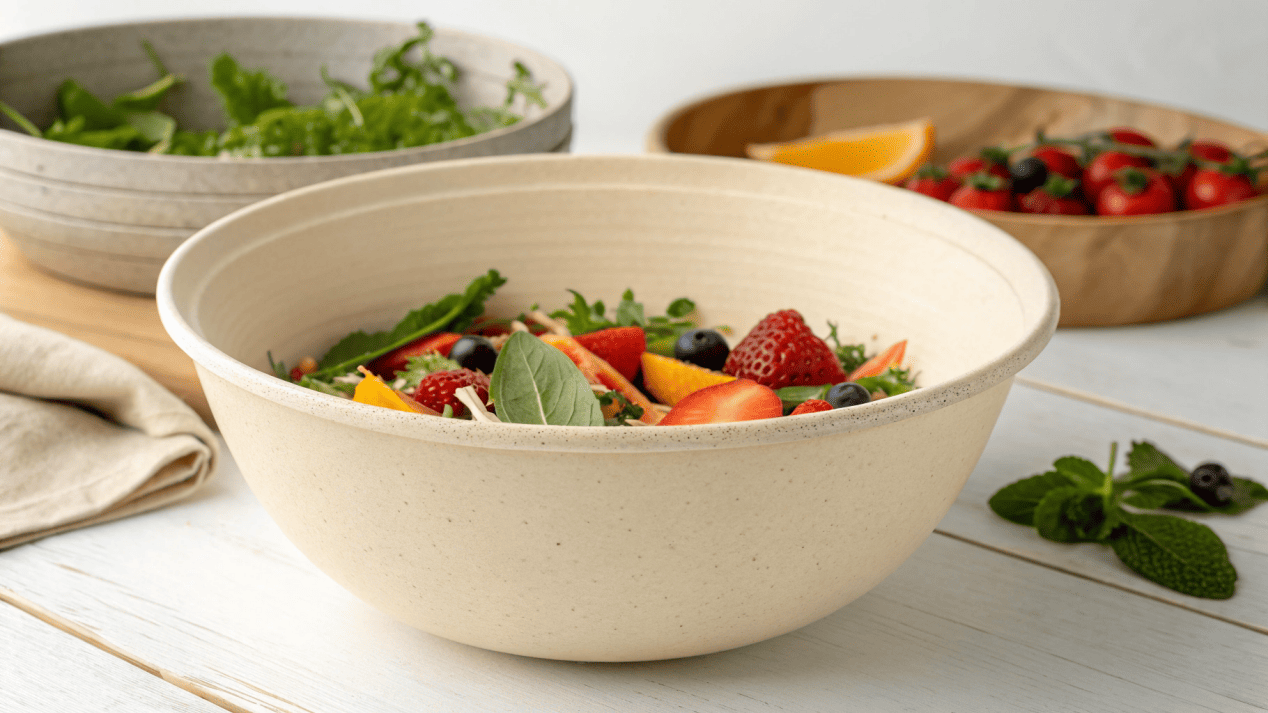
Your eco-friendly bowl is a powerful marketing tool. The branding method depends entirely on the material you choose. If you want bold, full-color branding, then the PLA-lined paper bowl is your best choice. Its smooth paper surface is the perfect canvas for high-resolution graphics. We use advanced offset printing with food-safe inks to cover the bowl in your brand's vibrant colors and messaging. I recommend this for brands that want their packaging to pop and make a strong visual statement. On the other hand, if you prefer a more subtle, premium feel, you should choose bagasse or bamboo bowls. The textured, natural surface of these materials is not ideal for ink printing. Instead, we use embossing or debossing. We create a custom mold that presses your logo directly into the fiber of the bowl. This creates a stylish, tactile effect that you can feel. It communicates a natural, "eco-chic" identity that is very popular today.
What Defines a True Eco-Friendly Bowl Supplier?
You need a reliable supplier for compostable bowls, but a simple list of names doesn't tell you who is trustworthy. You risk partnering with a trader who can't guarantee quality or certification.
A top supplier is a true manufacturer, not a trader. They will readily provide compostability certifications (like BPI or FSC), have deep material expertise, and offer proven global logistics support.
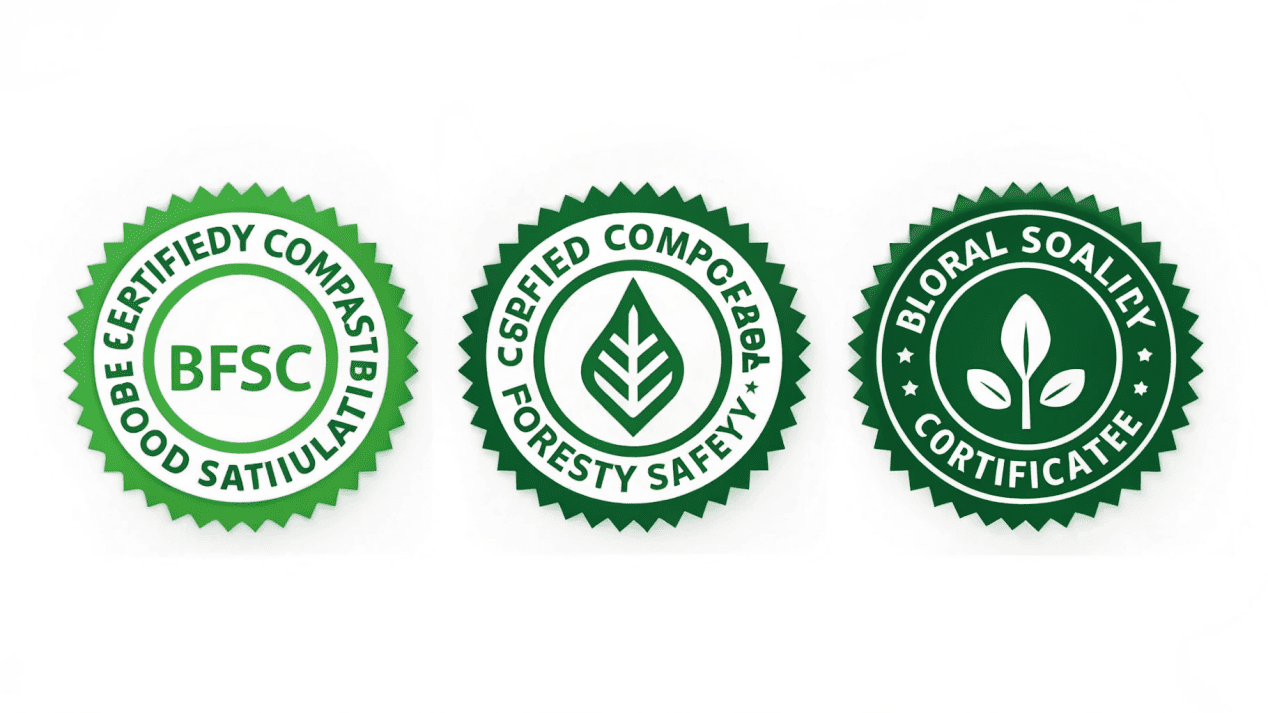
Instead of giving you a list of companies, I want to teach you how to build your own. This is how you find a real partner, not just a vendor. First, demand proof of certification. A serious manufacturer will immediately show you their documents for BPI compostability, BRC food safety, and FSC responsible sourcing. Never just take their word for it. Second, verify they are the manufacturer. I can't stress this enough. Work directly with the factory. A true manufacturer like us has our own production lines and QC team. This means better prices and direct communication. Third, assess their material expertise. Ask them about the pros and cons of bagasse versus PLA for your specific product. A great partner is a consultant who helps you choose. Finally, inquire about their logistics. Have they shipped to your country before? A proven track record, like our experience shipping to over 80 countries, shows they can handle the paperwork and complexities to deliver your order safely and on time.
Conclusion
Choosing truly sustainable packaging means choosing certified compostable bowls. Understanding the materials, breakdown times, and branding methods empowers you to make a genuine environmental statement with your brand.
